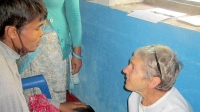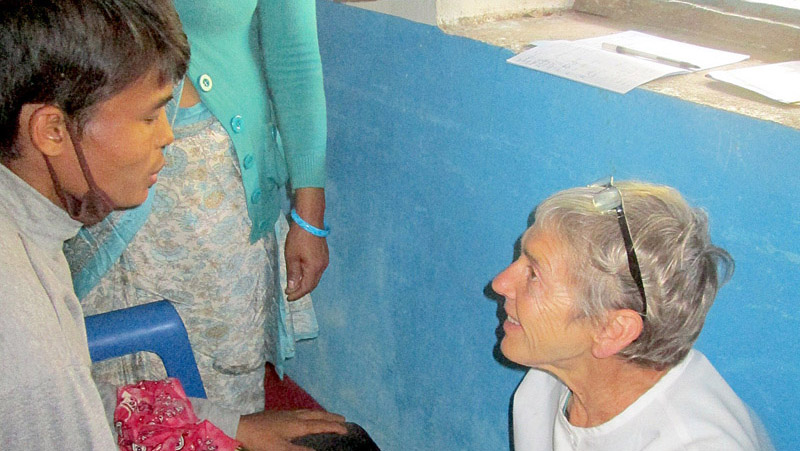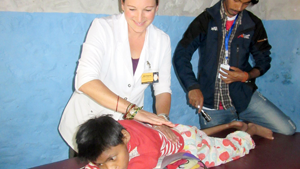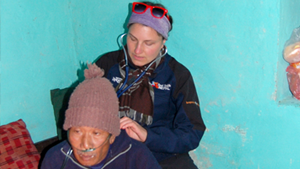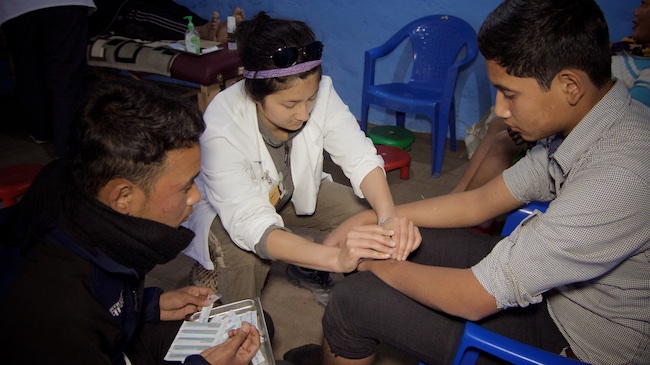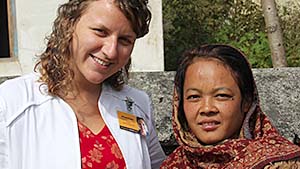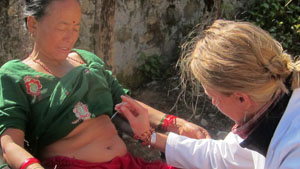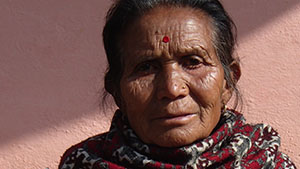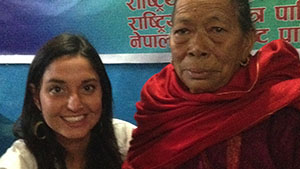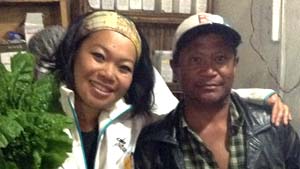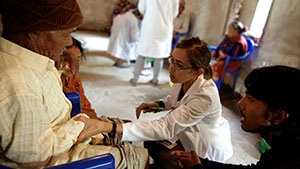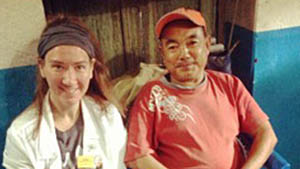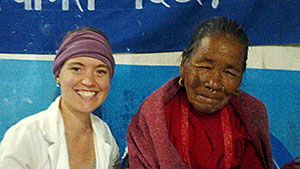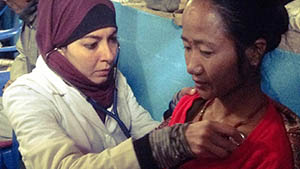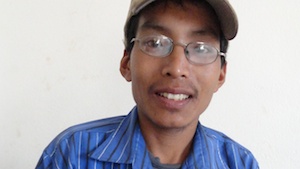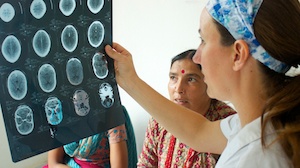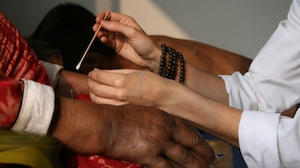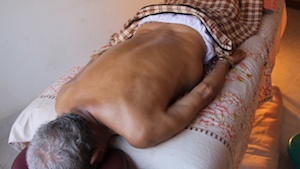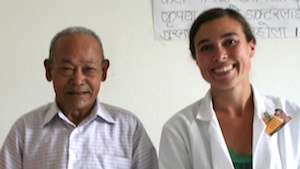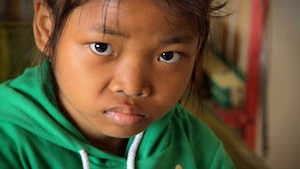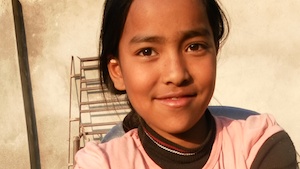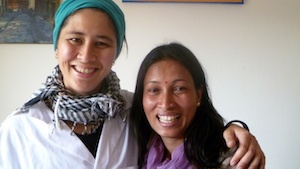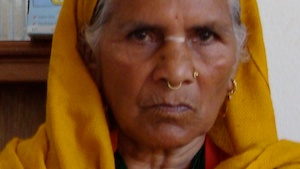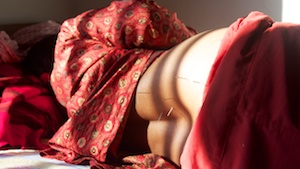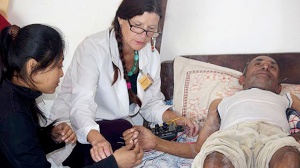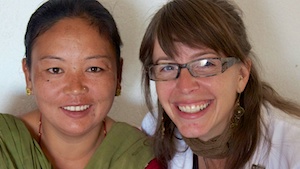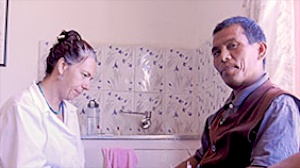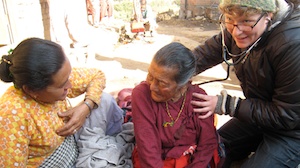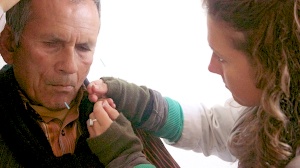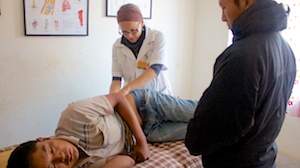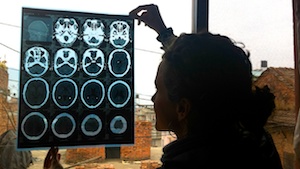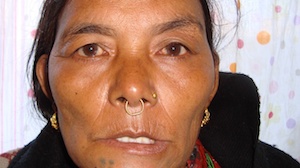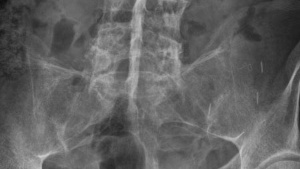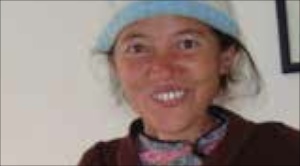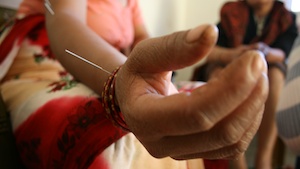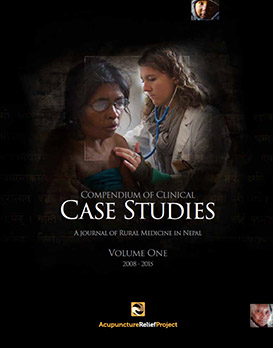Natalie Gregersen MAcOM LAc
December 2012
OVERVIEW
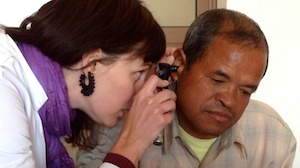 52-year-old male presents with right-sided, burning head and ear pain, right-sided hearing loss and anosmia. It is determined, after an initial ear examination with an otoscope, that the patient has a severe right-sided ear infection. After 12 treatments, which includes the use of acupuncture, internal and external Chinese herbs and antibiotics, the patient reports a significant reduction in the burning sensation. Objectively, the right side tympanic membrane shows a 90% improvement. There is no change in the anosmia and hearing loss.
52-year-old male presents with right-sided, burning head and ear pain, right-sided hearing loss and anosmia. It is determined, after an initial ear examination with an otoscope, that the patient has a severe right-sided ear infection. After 12 treatments, which includes the use of acupuncture, internal and external Chinese herbs and antibiotics, the patient reports a significant reduction in the burning sensation. Objectively, the right side tympanic membrane shows a 90% improvement. There is no change in the anosmia and hearing loss.
Subjective
The patient presents with right-sided, burning head and ear pain that started 6-7 months ago. His symptoms also include right-sided temporal headache, an itchy sensation deep in the right ear, tinnitus that comes and goes and right-sided hearing loss. He reports he can hear people talking, but can not clearly understand what they are saying. Anosmia started 2-3 months after the burning head/ear pain started. The patient reports that it feels like he has a ‘fire’ inside his right ear, and prior to the pain starting, he heard a bug-like sound. He has moderate pain (4/10), which doesn’t interfere with work when he is concentrating on a task. When he is not distracted, the pain is constantly present. Nothing makes the pain better or worse. Although he has loss of smell, he can taste his food.
Objective
The patient appears to be in good health for his age and environment. He’s always in good spirits and maintains eye contact during the interview. He is often joking with the other patients in the room while waiting his turn for treatment.
An initial right ear examination with an otoscope shows a purulent and inflamed tympanic membrane. The entire membrane is ringed with redness with bright red streaks throughout it. There is pus along the superior border and the entire tympanic membrane is severely scarred and cloudy. The left membrane appears normal and healthy.
A strong smelling substance, called Tiger Balm, is held under the nose while the patients eyes are closed. He reports that he is unable to smell it. Both sides of the nose are checked by holding the balm under one nostril while the other is plugged. Anosmia appears to be bilateral.
Hearing loss is checked by using a 128 hz tuning fork. Patient reports that he is able to hear the sound until it is 6 inches away from the right ear. The left ear is also checked. He can hear it until it is 1 foot from his ear.
Pulses are wiry, slippery and rapid, especially in the Liver position. Tongue shows a pale center with red sides and a greasy yellow coat.
Assessment
DX: Severe, right-sided ear infection with anosmia and auditory deficit
TCM DX: Damp-heat in the Triple Burner and Gallbladder channels
PROGNOSIS: Using oral antibiotics, herbs, antibiotic ear drops and acupuncture, a complete recovery from the ear infection is expected. With the treatment of the ear infection, there is a possibility the patient may recover his sense of smell, but the outcome is uncertain. Due to the severe scarring of the right tympanic membrane, full recovery of hearing is unlikely.
Initial Plan
Treat with acupuncture and herbs 3 times per week for 10 treatments before reassessing. Include western pharmaceuticals, such as oral antibiotics and antibiotic ear drops, to clear heat and reduce inflammation.
Focus on clearing dampness and heat in the Liver, Gallbladder and Triple Burner channels.
Typical acupuncture points include: GB20, R-TB17, GB43, TB2, TB5, GB40, GB34, LV3, LI4, ST36, SP10, LI11
Continuing treatment
Initial treatment: Includes oral antibiotics of amoxicillin 3TID for 5 days plus Huang Lian Jie Du Tang 3TID for 6 days
Treatment 4: It was determined that the pus was reduced by 75%. Therefore, the patient was switched to Long Dan Xie Gan Tang 3TID.
Treatment 2-9: External solution was made of 1 Huang Lian Jie Du Tang pill, crushed and mixed with rubbing alcohol. 15 drops of this herbal solution was dropped into the patient’s right ear after his acupuncture treatment.
Treatment 9: It was determined that the patient had plateaued. Therefore, the external herbal solution was discontinued, and antibiotic ear drops at a dosage of 3 drops TID, administered by the patient, was added. Treatment 12: Due to the significant reduction in the patient’s symptoms, the herbal formula Long Dan Xie Gan Tang was discontinued. The patient continued the use of antibiotic ear drops for 2 more weeks.
Outcome
After 12 treatments, the burning sensation was reduced by 80%. Patient reported a constant, mild burning and itchy sensation deep inside the right ear, but it no longer felt like he had a ‘fire’ in his ear.
His tinnitus and temporal headache still came and went, but he also had hypertension, which could be contributing to these symptoms.
Objectively, the tympanic membrane improved by 90%. It was no longer purulent and the redness was concentrated to the upper right quadrant of the membrane. There were no longer streaks and the redness had changed from bright to dark red and looked like a scab.
There was no change in the hearing loss, though the patient was seen talking on his cell phone with his right ear. He was able to make out what people were saying if the phone was held close to his ear. There was no change in the anosmia.
Conclusion
By week 10, the patient’s visits were reduced to 2 times per week. He seemed much less concerned about his head/ear pain and asked to work on other conditions. The patient is using antibiotic ear drops during a 3 week break from treatment and his condition will be reassessed when the new team of practitioners arrive.
This case demonstrates the importance of understanding how to use diagnostic tools, such as an otoscope, in the treatment of certain conditions. This is especially relevant in Nepal where the acupuncturist is often the patient’s primary care physician. The diagnosis and objective observation of an inflamed tympanic membrane provided a clear picture of the patient’s presenting symptoms, guiding the treatment plan. The use of Chinese herbs, in conjunction with western pharmaceuticals, greatly improved the outcome.


